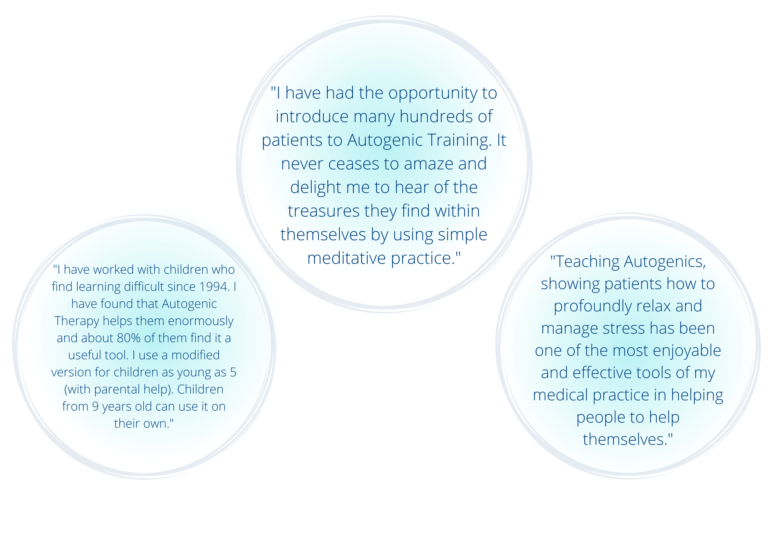Step 1: Assessment
You will meet your therapist before the course for an assessment. This is usually a one hour consultation, accompanied by a detailed questionnaire you will have completed in advance. The assessment is a good opportunity for both you and the therapist to make an informed decision as to whether AT is the right choice for you at that time. Very occasionally, AT might be deemed unsuitable for you, depending on your health situation at the time. No promise about outcome is ever made.
If you have been referred specifically for a medical condition, or in the unusual event of a complicated medical history emerging during the assessment, the therapist, if not medically qualified, will ask your permission to liaise with your relevant health professional if necessary. All clients are given individual monitoring during the training.
Step 2: Group or Individual?
The decision may be simple, if the therapist doesn’t run groups! A plan of appointments is made – usually weekly, but this can vary according to convenience.
Step 3: The eight- nine-session course
At each session, your therapist will explain the theory and practice of each new exercise. The course is cleverly structured so that a new exercise is learned each week, the new part incorporated into what has already been practised. You will practise at home three times a day for a few minutes – also at night when awake. In the weekly session you will report on how your practice is going. You will keep a brief daily diary, to record your observations, insights as they occur, and of course your queries.
Step 4: Follow-up
At the final session you will be offered a date to return for a follow-up / refresher. Often therapists use measuring tools at the start and finish of courses – these are useful and help you realise what progress has been made, and what issues might need further work.
We cannot over-emphasise the subtleties of AT – there are no blinding flashes of realisation (except sometimes!). Therapists often observe quiet change: a face looking less strained, the eyes more relaxed and brow ‘open’.
In summary, AT is a mind-body approach which once learned is a skill for life.
The passive observer attitude which is adopted during practice, allows us to perceive the mind and body objectively so that we can take the position of casual witness. Schultz described the move into the passive observing, witnessing stance as the ‘Umschalten’: the “Concentrative Experience of Switching Process” (Schultz, 1973, p322). This can be translated into English in many ways: we shift, switch, change the channel, switch over. Some people, through the move to a witness stance, describe this as akin to ‘something spiritual’.

